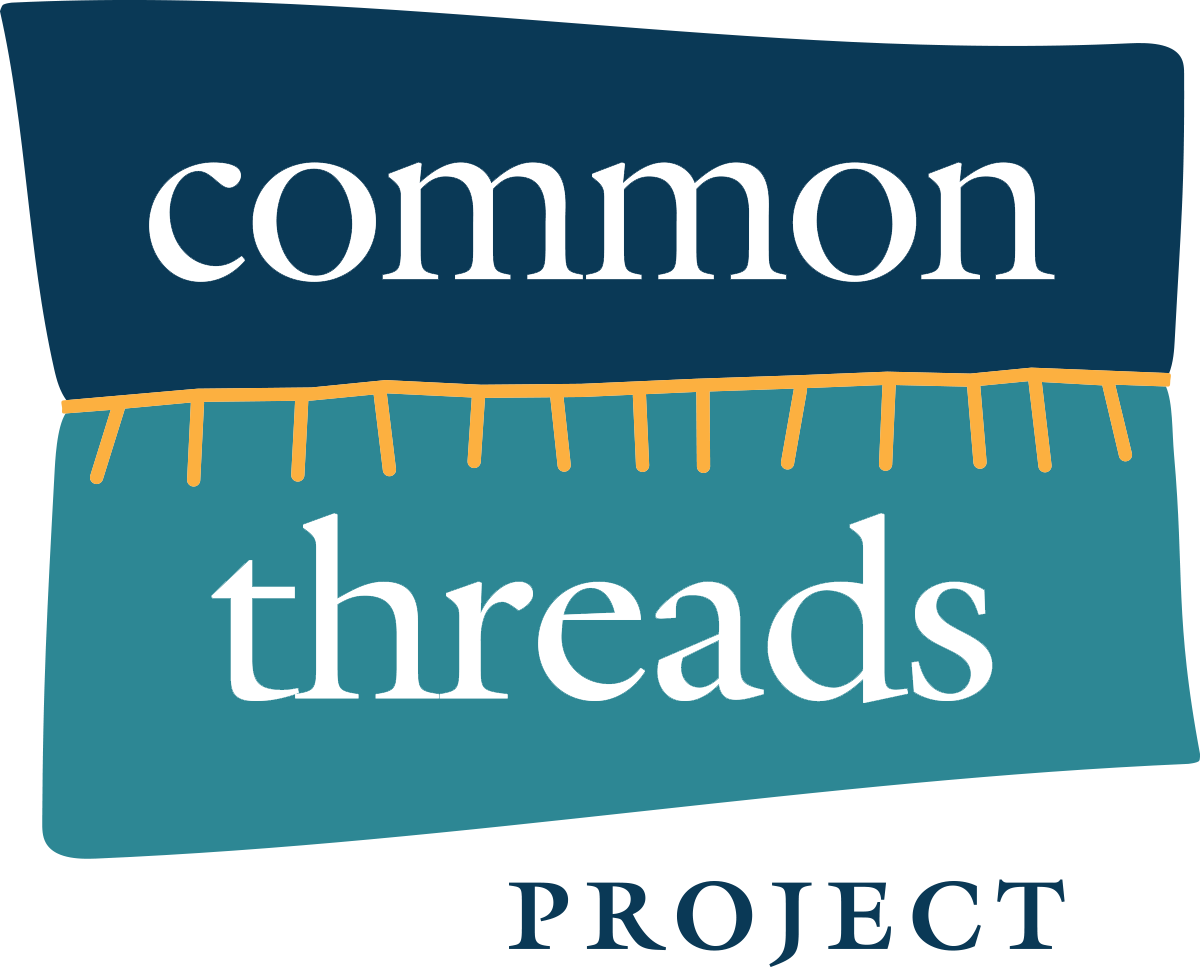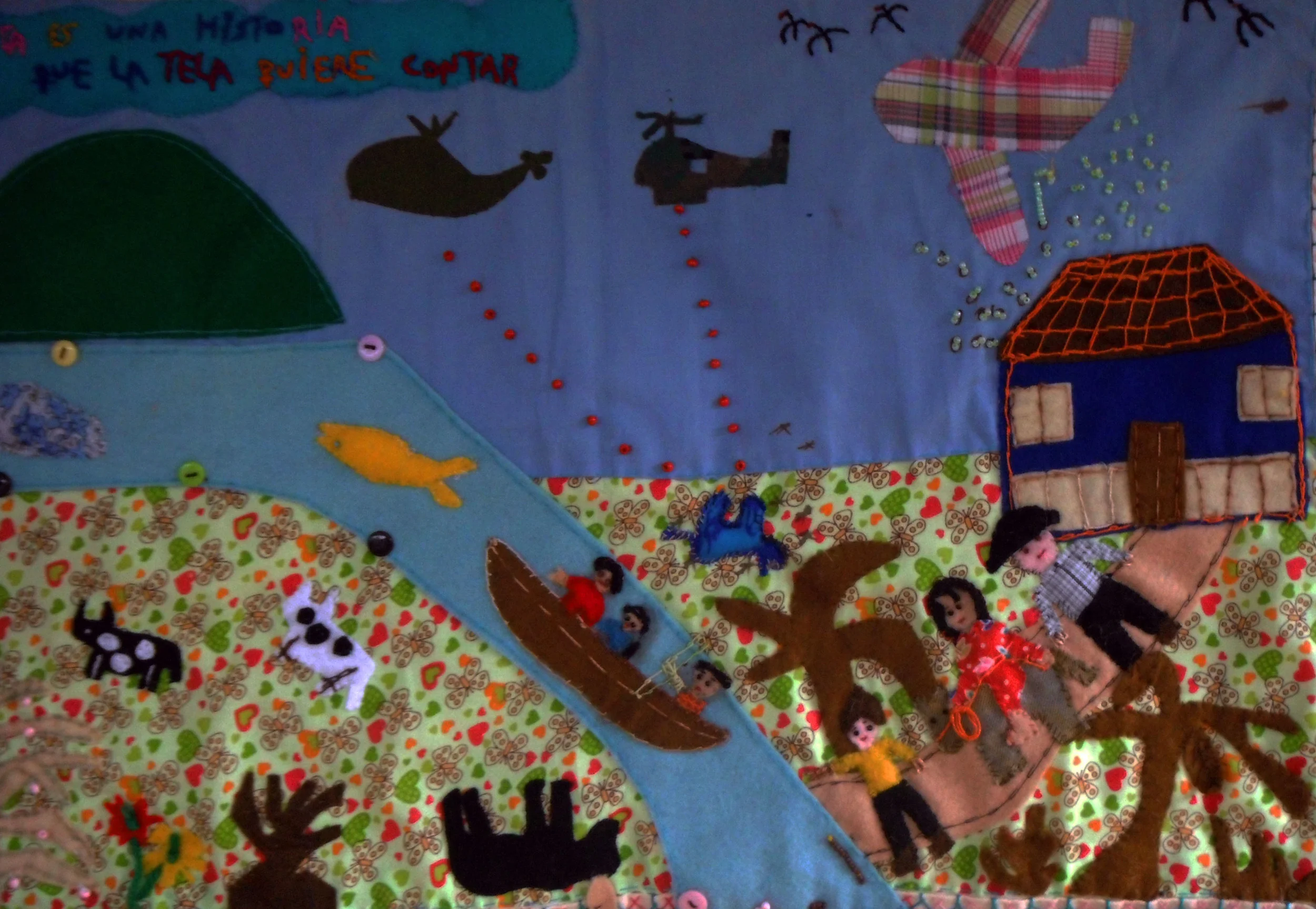The concept of story cloths comes from a long history of women gathering to sew together. Across various cultures, at various times, women have used the safety of that gathering to express their trauma stories through the cloths they sew. The video shown here shares a small sliver of that history, and the inspiration for Common Threads Project.
How do story cloths help?
building connections with others
In a community torn apart by mass violence and displacement, strengthening bonds and restoring trust is essential. In small sewing circles, women share their stories with each other and build close relationships. They discover that they are not alone, and that their reactions to their circumstances are understandable. This process helps to reduce stigma and shame.
achieving mastery
To plan, persevere, and complete a project promotes a deep sense of self-efficacy, which has often been lost in the face of enduring violence. Creating something intricate out of a hideous trauma is a component of mastering the experience.
promoting stress reduction
Hand sewing is a profoundly self-calming activity. When survivors of violence struggle to find ways to quiet a nervous system that has had to function for long periods on high alert, it’s important to practice self-soothing behaviors. While involved in the meditative, rhythmic motion of stitching, the body’s relaxation response is engaged, enhancing concentration and slowing down breathing.
Providing safety
Hand sewing is non-threatening, familiar, and reparative. When the hands are busy and eye contact is not expected, people find it easier to talk. At the patient pace of sewing, trust can gradually develop. This provides an optimal context for processing emotional material that has people feeling at their most vulnerable.
Encouraging non-verbal self-expression
Current neuroscientific research demonstrates that traumatic experience is encoded non-verbally - in visual images and in somatic sensation. This is because the verbal processing centers in the prefrontal cortex deactivate during mortal threat, and the visual cortex “lights up” to promote survival. This helps us understand why exclusively verbal treatment approaches often are not effective for survivors of severe trauma, and why we must offer them an opportunity to express themselves visually.
fostering empowerment
Story cloths have exposed torture, rape and genocide where regimes have attempted to silence their victims. Part of the healing process is finding a way to be heard, and sewing story cloths can begin the process of developing a voice and reclaiming agency.
preserving cultural identity
Creating textiles offers a way for women to affirm cultural identity, particularly when they have had to flee from their communities. Preserving these traditions is an important element of the group sewing experience. By practicing these techniques with experts in their community, survivors can make a vibrant connection to their past.

